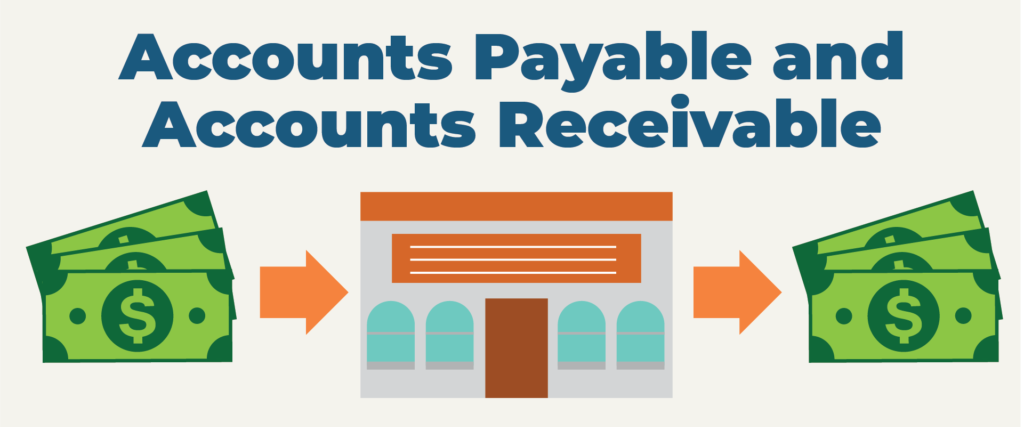
Managing accounts receivable (AR) and accounts payable (AP) is fundamental to the financial stability of any business. These two components directly influence cash flow, financial planning, and business growth. Properly handling AR and AP ensures timely collections, maintains vendor relationships, and optimizes working capital.
What Are Accounts Receivable and Accounts Payable?
Accounts Receivable (AR)
Accounts receivable refers to the money that customers owe to a business for goods or services provided on credit. These amounts are recorded as assets on the balance sheet because they represent expected income. Effective AR management ensures steady cash inflow, reducing the risk of bad debts.
Accounts Payable (AP)
Accounts payable represents a company’s obligation to pay suppliers or vendors for goods and services received. These liabilities are recorded as short-term obligations on the balance sheet. Maintaining efficient AP processes helps businesses maintain strong vendor relationships and take advantage of early payment discounts.
Importance of Proper AR and AP Management
A well-structured AR and AP system ensures:
- Consistent cash flow to fund operations and investments.
- Reduced financial risk by minimizing outstanding debts and liabilities.
- Enhanced vendor and customer relationships through timely payments and collections.
- Stronger financial reporting for informed decision-making.
Best Practices for Managing Accounts Receivable
1. Clear Credit Policies
Setting well-defined credit policies helps in evaluating customers before extending credit. Businesses should establish credit limits, payment terms, and assessment criteria to minimize the risk of non-payment.
2. Automated Invoicing and Reminders
Using automated invoicing software speeds up the billing process and reduces human errors. Sending timely reminders ensures prompt payments and reduces overdue accounts.
3. Regular Account Reconciliation
Reconciling AR records with bank statements helps detect errors, unauthorized deductions, or missed payments. Keeping accurate records prevents financial discrepancies.
4. Offering Multiple Payment Methods
Providing diverse payment options, including credit cards, bank transfers, and digital wallets, enhances customer convenience and accelerates payment processing.
5. Implementing Early Payment Incentives
Offering discounts for early payments motivates customers to settle invoices sooner, improving cash flow.
Best Practices for Managing Accounts Payable
1. Organized Invoice Processing
A streamlined invoice approval process prevents late payments and penalties. Centralizing invoice processing ensures accurate tracking and compliance.
2. Negotiating Favorable Payment Terms
Businesses should negotiate extended payment terms with suppliers to optimize cash flow while ensuring timely payments to avoid late fees and maintain supplier trust.
3. Leveraging AP Automation
Automating AP workflows minimizes errors, enhances efficiency, and improves payment scheduling. It also reduces administrative workload and prevents missed due dates.
4. Maintaining Vendor Relationships
Strong vendor relationships lead to better pricing, improved credit terms, and priority service. Ensuring timely payments builds credibility and fosters long-term partnerships.
5. Cash Flow Forecasting
Regular forecasting helps businesses prepare for upcoming payments, ensuring sufficient liquidity and avoiding cash shortages.
Impact of AR and AP on Business Financial Health
Cash Flow Optimization
Effective AR and AP strategies ensure businesses have the cash needed to meet obligations while minimizing excess idle funds.
Improved Working Capital Management
Balancing receivables and payables improves working capital efficiency, allowing companies to allocate resources effectively.
Reduced Bad Debt Risk
Proactive AR management reduces the risk of bad debts, ensuring a healthier balance sheet and financial stability.
Better Financial Planning
Accurate AR and AP tracking allows businesses to create informed financial forecasts, preventing unexpected shortfalls and ensuring operational continuity.
Challenges in AR and AP Management
Late Payments and Collections
Delays in receiving payments can lead to cash shortages, requiring businesses to implement stricter collection policies and credit checks.
Invoice Discrepancies and Errors
Errors in invoices can delay payments and damage vendor relationships. Regular audits and automation reduce these discrepancies.
Fraud Risks
Unauthorized transactions and fraudulent invoices pose significant financial risks. Implementing fraud detection mechanisms and approval hierarchies mitigates these threats.
Regulatory Compliance
Businesses must adhere to tax and financial regulations when managing AP and AR. Ensuring compliance avoids penalties and legal issues.
Technology and Automation in AR and AP
Accounts Receivable Software
Modern AR software automates invoicing, payment tracking, and reminders, reducing manual intervention and enhancing efficiency.
Accounts Payable Software
Automated AP solutions streamline invoice processing, approval workflows, and payment scheduling, ensuring accuracy and efficiency.
Integration with Accounting Systems
Seamless integration between AR/AP systems and accounting platforms enhances real-time financial tracking and reporting.
Conclusion
Efficient management of accounts receivable and accounts payable is critical for financial success. Businesses must adopt best practices, leverage automation, and maintain strong relationships with customers and suppliers to optimize cash flow and drive growth. By implementing structured AR and AP strategies, companies can strengthen financial stability and sustain long-term profitability.
Faq’s
1. What are the biggest challenges your business faces in managing accounts receivable and payables?
- Late payments from customers impacting cash flow.
- Manual processes leading to inefficiencies and errors.
- Difficulty in reconciling invoices and payments.
- Ensuring timely payments to vendors without disrupting operations.
- Compliance with tax and regulatory requirements.
2. How do you currently track and manage outstanding invoices and payments?
- Using accounting software like QuickBooks, Xero, or SAP.
- Maintaining spreadsheets for tracking due dates and outstanding balances.
- Automated invoicing and reminders through ERP systems.
- Regular follow-ups with clients through email or phone.
3. What payment terms do you typically offer to customers, and how do they impact your cash flow?
- Common terms: Net 30, Net 60, or Net 90 days, depending on the industry and client relationship.
- Shorter payment terms (e.g., Net 15) improve cash flow but may reduce competitiveness.
- Longer terms (Net 60+) can lead to cash flow strain but attract more customers.
- Early payment discounts (e.g., 2/10 Net 30) encourage faster payments.
4. Which accounting software or tools do you use for managing accounts receivable and payables?
- QuickBooks, Xero, FreshBooks for small to mid-sized businesses.
- SAP, Oracle, Microsoft Dynamics for enterprises.
- Automated payment solutions like Bill.com, Stripe, or PayPal for online transactions.
5. How often do late payments from customers affect your business operations?
- Frequently in industries with long sales cycles or B2B transactions.
- Delays in payments can lead to cash flow shortages and operational disruptions.
- High dependency on a few large clients increases risk.
6. What strategies do you use to minimize payment delays from clients?
- Sending automated reminders before and after due dates.
- Charging late payment fees to encourage timely payments.
- Offering early payment discounts.
- Conducting credit checks before extending payment terms.
- Establishing clear payment policies in contracts.
7. How do you handle disputes or discrepancies in accounts payable and receivable?
- Keeping detailed records of all invoices and transactions.
- Resolving disputes through direct communication with vendors or customers.
- Implementing a structured dispute resolution process.
- Using software tools to track and resolve discrepancies efficiently.
8. What factors influence your decision to outsource accounts receivable and payables management?
- Cost savings compared to maintaining an in-house team.
- The complexity of transactions and need for expertise.
- Need for improved efficiency and reduced administrative burden.
- Compliance with financial regulations and tax laws.
9. How important is automation in streamlining your accounts receivable and payables processes?
- Extremely important, as it reduces manual errors and speeds up collections.
- Automated invoicing and payment reminders improve cash flow.
- Integration with banking systems enables seamless reconciliation.
- AI-driven insights help optimize payment terms and forecasting.
10. What compliance or regulatory concerns do you consider when managing accounts payable and receivable?
- Tax compliance, including VAT, GST, and sales tax regulations.
- Adhering to financial reporting standards like GAAP or IFRS.
- Ensuring data security in electronic transactions (PCI DSS compliance).
- Managing international transactions with currency exchange regulations.
